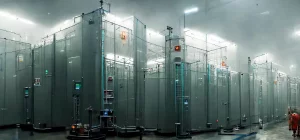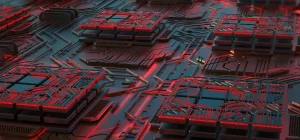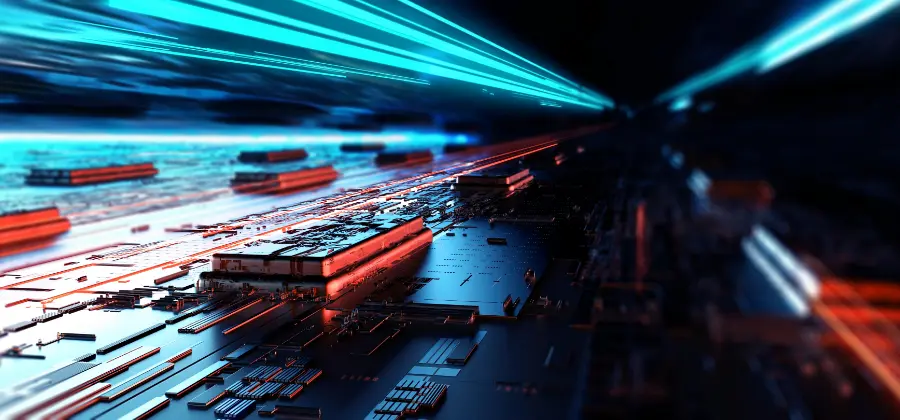

Unplanned network outages due to natural disasters, system failures, cyberthreats, or human error are on the rise, with 90 percent of organizations reporting they’ve had at least one such outage in the past year. While there are a number of strategies to consider, implementing hyper-converged infrastructure (HCI) as part of your disaster recovery (DR) processes can reduce your risk.
At their core, HCI systems essentially collapse the traditional three-tier data center architecture of compute, networking and storage into a single server platform with a hypervisor for creating and managing virtual machines (VMs). With its all-in-one architecture, HCI makes it relatively simple to replicate production environments on VMs which can be quickly brought online in the event of an outage.
Most HCI systems also come with built-in DR features, including advanced automation for recovering applications and data, support for multisite disaster recovery (DR), and synchronous replication for workloads running on VMs. Many systems also include so-called “instant recovery” capabilities that make it possible to achieve recovery point objective (RPO) times in just a few seconds.
Although HCI was conceived as a virtualization platform that would enable infrastructure consolidation, more and more organizations are recognizing its DR potential. In a recent Evaluator Group survey, “data protection and disaster recovery” ranked as the fourth most common business use case for HCI, behind infrastructure consolidation, desktop virtualization, and server virtualization.
Here are a few of the ways HCI can improve an organization’s disaster preparedness:
Instant recovery. HCI appliances create backup snapshots of a VM. In the event of an outage, you can restart the VM from the backup almost instantly. Once the problem has been resolved, the workload is redirected to the original VM. Because the recovery occurs behind the scenes, users don’t know that anything unusual has happened.
Cloud integration. HCI and cloud platforms virtualize resources in similar ways, and many vendors now integrate cloud gateways, management platforms, and cloud service metering to create a tighter link between the two. In this way, HCI systems can send backups to public, private, or hybrid clouds for heightened data protection. Management dashboards and automated discovery enable administrators to orchestrate on-premises and cloud workloads and streamline recovery in the event of an outage.
Remote work. HCI supports desktop virtualization by enabling operating systems and applications to be hosted on VMs running in the data center. In the event of a disaster, end-users can access a personalized environment via a wide range of devices from any location. This also improves data security and simplifies the process of updating applications, distributing security patches, and onboarding new employees.
Easy scalability. HCI architecture makes it simple to add appliances, or nodes, to an HCI cluster. The scale-out architecture allows organizations to quickly introduce additional storage, compute, networking, and virtualization resources as needed during a crisis. This eliminates the need to overprovision resources as a safeguard.
Reduced cost and complexity. Because HCI appliances are preconfigured, tested and ready to deploy, they eliminate the need to design, implement and integrate data center infrastructure from scratch. As a result, network technicians don’t need any specialized skills to use HCI to back up, clone, and restore VMs quickly, easily, and cost-effectively.
Speed and simplicity have always been among the hallmarks of hyper-converged infrastructure — and those are the same characteristics that make HCI a valuable tool for disaster preparedness. HCI gives organizations the ability to coordinate cloud and on-premises workloads from a central dashboard, failover to multiple sites, and rapidly restore workloads in a crisis. Give us a call to explore ways to improve your business resilience by integrating HCI into your data center environment.
Bill has been in the IT industry for nearly 30 years. For the past 20 years, he has been specializing in data center operations, including presales and engineering. In particular, Bill has spent the last 12 years focusing on data center infrastructure management (DCIM) and other monitoring-related technologies.

For years, data center power and cooling requirements remained relatively stable, enabling organizations to plan for...

Money, identities, books, art, movies, appliances, medical devices, automobiles… it seems as though there’s a...

Data centers are experiencing rapid growth to meet the burgeoning demand for processing power and storage capacity....

Once thought to be “nice to haves”, data center infrastructure management (DCIM) tools have become essential to...

Although businesses continue to migrate more applications and services to the cloud, most also need to maintain a...

As the costs of building and maintaining an on-premises data center continue to escalate, more and more organizations...

Traditionally, organizations build data centers from the ground up by installing cabinets and racks and then adding...

Fremont, Calif. — June 22, 2017 — Rahi Systems announced today a partner agreement with Daxten, a leading...

Despite predictions of its impending demise, the U.S. on-premise data center market remains healthy. More than half of...

While most discussions of IT security focus on logical controls, protection of the physical data center infrastructure...

Outdated or obsolete applications make up nearly a third of the typical organization’s software portfolio,...

Traditionally, data centers have had power distribution systems purpose-built by electricians. However, custom...

More and more organizations are choosing to get out of the data center business and partner with a colocation provider...

Power Usage in Data Centers Data Center power consumption has long been a concern of budget-conscious IT managers....

Most organizations had to rush to shift to work-from-home models. Now, they’re taking a more strategic approach to...

OVHcloud Data Center Fire in France In March 2021, OVHcloud’s five-story, 5,400-square-foot SBG2 data center in...

Why is Workspace Utilization Analysis more important now than ever before? Organizations need to understand how many...

In today's fast-changing world, businesses are no longer limited by borders. Thanks to advanced technology and the...

As organizations look to expand their operations in the Chinese market, adopting a hybrid cloud environment that...

For many international businesses with a presence in China, network stability issues are often the biggest concern...

AWS China comprises 2 AWS regions, Beijing and Ningxia, with 6 availability zones in total. Beijing is operated by...

As businesses increasingly move their operations to the cloud, it becomes essential to have a well-designed and...
Let our experts design, develop, deploy and manage your requirements while you focus on what's important for your business
Please check your inbox for more details.
| Cookie | Duration | Description |
|---|---|---|
| cookielawinfo-checkbox-analytics | 11 months | This cookie is set by GDPR Cookie Consent plugin. The cookie is used to store the user consent for the cookies in the category "Analytics". |
| cookielawinfo-checkbox-functional | 11 months | The cookie is set by GDPR cookie consent to record the user consent for the cookies in the category "Functional". |
| cookielawinfo-checkbox-necessary | 11 months | This cookie is set by GDPR Cookie Consent plugin. The cookies is used to store the user consent for the cookies in the category "Necessary". |
| cookielawinfo-checkbox-others | 11 months | This cookie is set by GDPR Cookie Consent plugin. The cookie is used to store the user consent for the cookies in the category "Other. |
| cookielawinfo-checkbox-performance | 11 months | This cookie is set by GDPR Cookie Consent plugin. The cookie is used to store the user consent for the cookies in the category "Performance". |
| viewed_cookie_policy | 11 months | The cookie is set by the GDPR Cookie Consent plugin and is used to store whether or not user has consented to the use of cookies. It does not store any personal data. |
